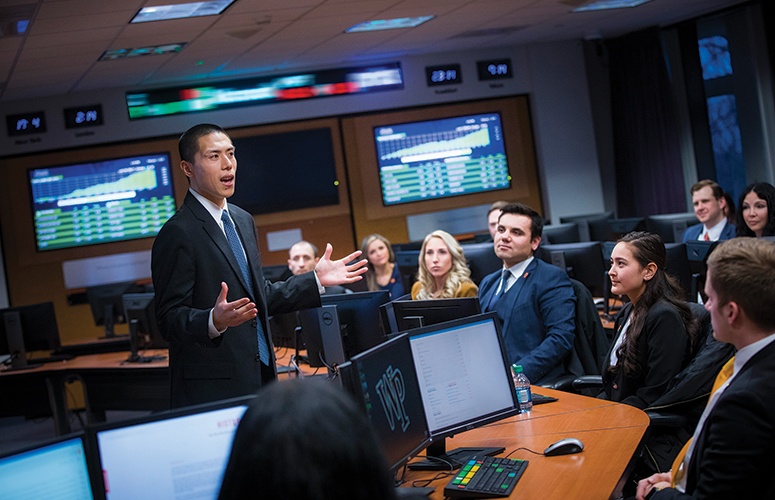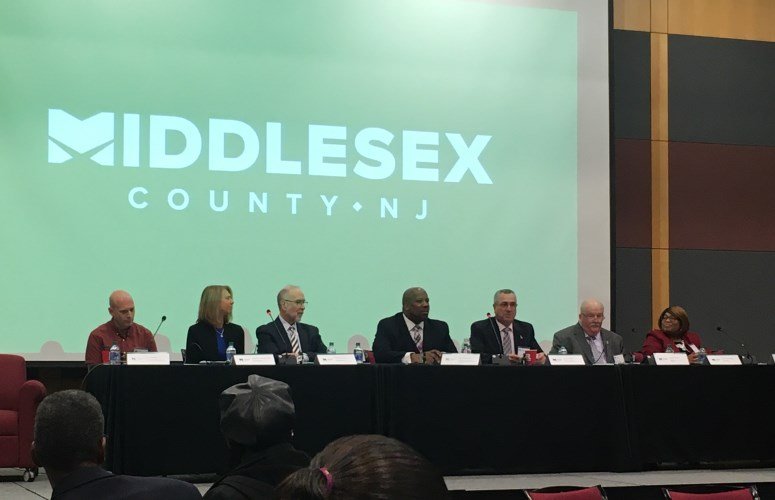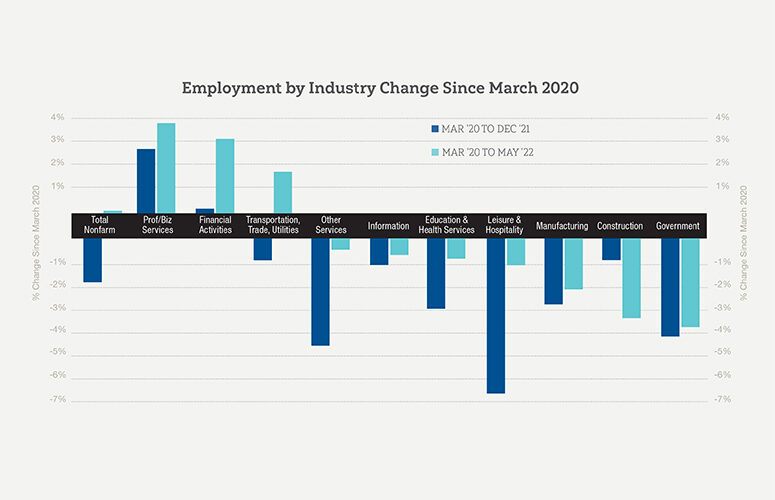
Change by Degrees
Academic leaders discuss the development of new degree programs and course offerings in order to meet student and workforce demands.
By Anthony Birritteri, Editor-in-Chief On Jan 2, 2019Most individuals typically view the start of the new year with optimism, as they confidently carry a wish list of well-thought-out New Year’s resolutions in their back pockets. For those in the workplace, continuing one’s education, whether to advance in the field one is already in or make a 360-degree career change, can be the biggest resolution a person can make.
Making this investment is a business decision for both the student and the institution of higher education. The student has to consider tuition costs and time constraints, while an institution of higher education must deliver competitive in-demand programs that will serve the needs of the New Jersey and global economies, and more importantly, immediately land students good paying jobs in their chosen fields.
As an example of the latter, Fadi Deek, provost and senior executive vice president at the New Jersey Institute of Technology (NJIT), says the most important consideration for the institute when it comes to developing a new program is the potential employment of students. “The kinds of majors we want to create are the ones that will enable our students to not only land jobs, but have multiple job offers. That is a reality for students at NJIT,” he says.
NJIT develops programs based on the needs of employers throughout New Jersey, the tristate area, the nation, and for the global economy. “It’s all of the above,” Deek says. “We want to train [students] to take advantage of high-tech positions in New York City, the greater Boston area, California and foreign countries, but we of course take into consideration the specific needs of the economy in which we currently exist. This is how we think of it: Will our students be able to get a job while they are pursuing their majors?” The answer to that, he says, is accomplished by serving local business needs.
Studying Trends
There are many ways college and universities keep tabs on business trends in the continuous effort to develop new or alter existing courses or degree programs. Mostly all of the institutions interviewed for this article have industry advisory boards that correlate to a particular degree program or school within an institution. These boards consist of business executives who know the workforce needs of their own companies and respective industries, and advise schools on these needs (present and future). Then, there are faculty members – adjunct professors – who work in industry while teaching a course, who provide valuable input on trending business needs.
In addition to the avenues mentioned above, NJIT’s Deek says the institution keeps its eye on government statistics coming from, for example, the U.S. Department of Labor. “This gives us an idea of long-term projections and the thinking that that will go behind the potential creation of new programs,” he says.
Dr. Robert McCaig, vice president of enrollment management at Monmouth University, says that in addition to advisory boards, the university scans media articles on a daily basis – whether in publications specifically geared towards the higher education community or, for example, major newspapers such as The New York Times, The Wall Street Journal or The Washington Post. These articles are then sent to senior leadership.
Monmouth University also studies the Integrated Postsecondary Education Data System (IPEDS), a federal database which is part of the U.S. Department of Education, which provides vast amounts of information including, for example, how many degrees are granted by a particular college or university. “You can study that to see, over time, what majors are conferring more or fewer degrees. That gives you a sense of the market need for those degrees,” McCaig explains, adding that Monmouth University also studies enrollment trends on an institutional, regional and national level for a college its size over a three-, five- and ten-year period.
Programs for Today’s Economy
What colleges and universities roll out as new programs to meet demand varies by institution. There is no doubt that STEM (science, technology, engineering and mathematics) programs have been in demand in recent years, with the promise of immediate job opportunities for graduates who have obtained related degrees. However, the answers that the various institutions of higher education interviewed give are surprising in that a STEM education is not the be-all and end-all of career success. Answers vary depending on an institution’s core mission. Schools such as NJIT are technology-based, while others do not want to stray from their liberal arts foundations.
One such school is Monmouth University, where McCaig says he is troubled by the “vocationalization” of higher education. “Whether it’s because of the cost of higher education, or the political landscape, we have more families looking at higher education in a linear way as to what major is going to yield what job for their child,” he says. “However, the professional world does not work that way. Graduates are going to change jobs an average of seven times throughout their careers. Monmouth is not a liberal arts institution, but we have a strong liberal arts foundation and we believe in training our students to be critical thinkers. Critical thinking, strong communications, reading and writing skills are going to be the best preparation for the versatile career paths people will face.
“When I speak with families, I detect this strong linear path all the time, but you have to listen to the students because they are not going to be successful if they are not following their passions,” McCaig continues.
To prove the point that a liberal arts degree can be just as valuable as a STEM degree, McCaig describes a Wall Street Journal article he recently read that reported someone in the liberal arts has an equal chance of being gainfully employed as someone with a biology degree. The article, he continues, also revealed that the bottom quartile of engineering majors earn less that the top quartile of humanities and social science majors.
That said, McCaig comments that computer science is a popular undergraduate destination these days at Monmouth University and that the health field is booming. To that end, the university has restructured some of its health offerings. “We added a Health Promotion major, as well as tracks in Fitness and Wellness, Public Health and – in our Health Studies major – tracks in Health Science and Exercise Science.”
Montclair State University’s Willard Gingerich, PhD, provost and vice president of academic affairs, takes a similar stance on the STEM issue. He recounts the finding of a University of Texas study in which the institution was able to trace its graduates and their salaries through U.S. Census Bureau data. “It came up with a couple of surprises: While students with liberal arts degrees did not earn as much at their first jobs, over a period of years, they tended to earn as much as, or even more money than, students who majored in STEM disciplines,” Gingerich explains.
What’s New
A look at some of Montclair’s new programs goes hand-in-hand with Gingerich’s observation. This coming September, the university will be introducing BA programs in Public and Professional Writing; Language, Business & Culture; and Education Studies. It will also offer a MS in Cybersecurity and is introducing a minor in Sports Nutrition.
At Wayne-based William Paterson University’s Cotsakos College of Business, Dean Siamack Shojai says the degree programs that are in high demand include the MBA, the MS in Applied Business Analytics, undergraduate degrees in Accounting, Digital Marketing and Finance (with a concentration in Credit Analysis). Coming this fall, there will be a new Executive Master of Science in Sales Leadership Program.
Echoing the previous remarks from his academic colleagues, Shojai says that in business, “well-rounded, educated students with computer skills and soft skills are in high demand regardless of one’s undergraduate major.”
Meanwhile, at William Paterson University’s College of Science and Health, Dean Venkat Sharma sees high demand in the school’s Interdisciplinary Master’s Degree in Applied Business Analytics, the new Bachelor’s Degree in Actuarial Sciences, degrees in Biochemistry, Athletic Training, Speech-Language Pathology, and its Accelerated Bachelor of Science in Nursing Program. The college also recently launched a new Master’s Program in Materials Chemistry.
Seton Hall University is seeing great interest in the healthcare professions due to the opening of the new Hackensack Meridian School of Medicine at Seton Hall University, located in Clifton and Nutley. Demand in the healthcare field includes: nursing degrees, health science degrees, such as physician assistant and physical therapy degrees, and pre-med education. According to Joan F. Guetti, PhD, senior associate provost at Seton Hall, these programs will help offset “a predicted shortage of doctors and other types of healthcare professionals in our state.”
Recently established undergraduate programs at the university include interdisciplinary boot camps in Cybersecurity and Blue Courage (law enforcement). On the graduate level, there are a number of business certificates, which include Accounting, Financial Decision Making, and Entrepreneurship. The University also offers certificate programs in Data Visualization and Analysis, Case Management for healthcare providers and Christian Spirituality.
Other new programs include minors in Medical Humanities, Sports Media, and Irish Literature. At the graduate level, Seton Hall now offers the MS in Physics and an Online Executive MS in International Affairs.
Commenting on the need for well-rounded skill sets, Guetti says. “We often read that employers want people who can write effectively, use social media, and can work collaboratively. To that end, Seton Hall offers students a four-year Certificate Program in Leadership through the newly created Buccino Leadership Institute. The interdisciplinary model is to develop the next generation of leaders who possess a multifaceted skill set that will enable them to be successful and make positive contributions to society in the future.”
At NJIT, Provost Deek says programs that relate to computing remain more popular than ever. “So, [at NJIT] there will be additional programs to complement the existing inventory of programs in data science. Cybersecurity will also be popular, so we are creating certificate programs in this area. We are offering a concentration and specialization that will likely become a full-fledged major in cyber-psychology. We also expect materials engineering and science to become popular.” He adds that many of the mentioned programs exist at the graduate level, but will be introduced at the undergraduate level.
The Apprenticeship Push
Earlier this year, Governor Murphy announced the concept of the New Jersey Apprenticeship Network (NJAN), an initiative he said will “transform the Garden State into a leader for state apprenticeship programs and will provide options for all New Jerseyans to build meaningful careers across a wide range of employers, including fields to bolster our innovation economy.”
Among the plans for NJAN is the creation of formal links between K-12 and higher education systems so that more residents will receive advanced degrees with students having more career-focused options. The Department of Labor and Workforce Development, the Department of Education, and the Office of the Secretary of Higher Education are leading the buildout of the NJAN.
How do institutions of higher education feel about this apprenticeship initiative and tailoring their programs to assist in the effort?
“We are pleased with it,” NJIT’s Deek says. “It is truly fundamental to the education that NJIT provides. Many of our students come here because of the applied nature of our degrees. Fundamental to such education is co-op internships and apprenticeships … anything that takes our students outside of the classroom and puts them – very early on – in workplace environments.”
Gingerich at Montclair State University says the institution is putting together proposals for the new initiative. He adds, “We have the only registered apprenticeship [program] of any college in the state … and we are interested in tailoring internships into apprenticeships.”
Monmouth University’s McCaig feels differently, saying, “The governor’s focus on apprenticeship programs is part of that vocationalization of higher education. … Now, there are needs that our society has. Maybe students don’t want a full computer science degree, but they want to learn a certain programming skill that meets a certain market need. That will make the student better, and society better. However, I don’t see us departing from our liberal arts foundation. Monmouth University is about training students to think … to be good citizens. … We are preparing them to be good citizens of the world.”
This snapshot of college degree trends and the differences in opinions that exist between educators, government and even parents and students, reveals there is no “one-size-fits-all” path in higher education. McCaig perhaps gives the most sound advice by saying, “If students follow their passion, and they are good at their passion – or major – they will be fine.”
To access more business news, visit NJB News Now.
Related Articles:





